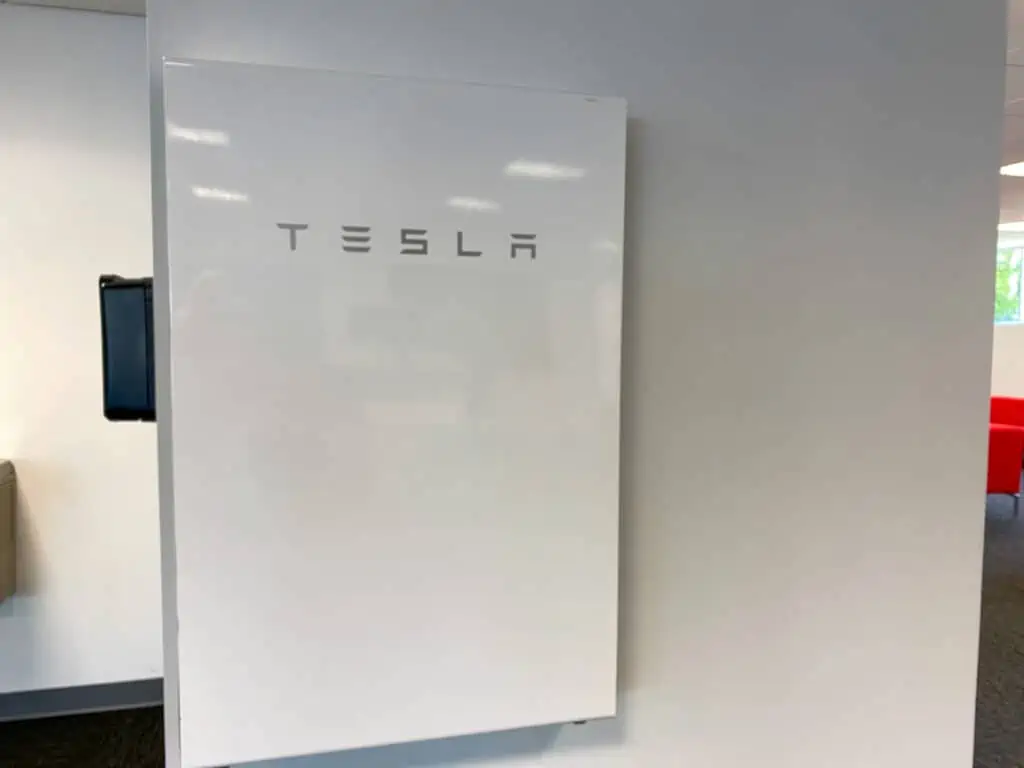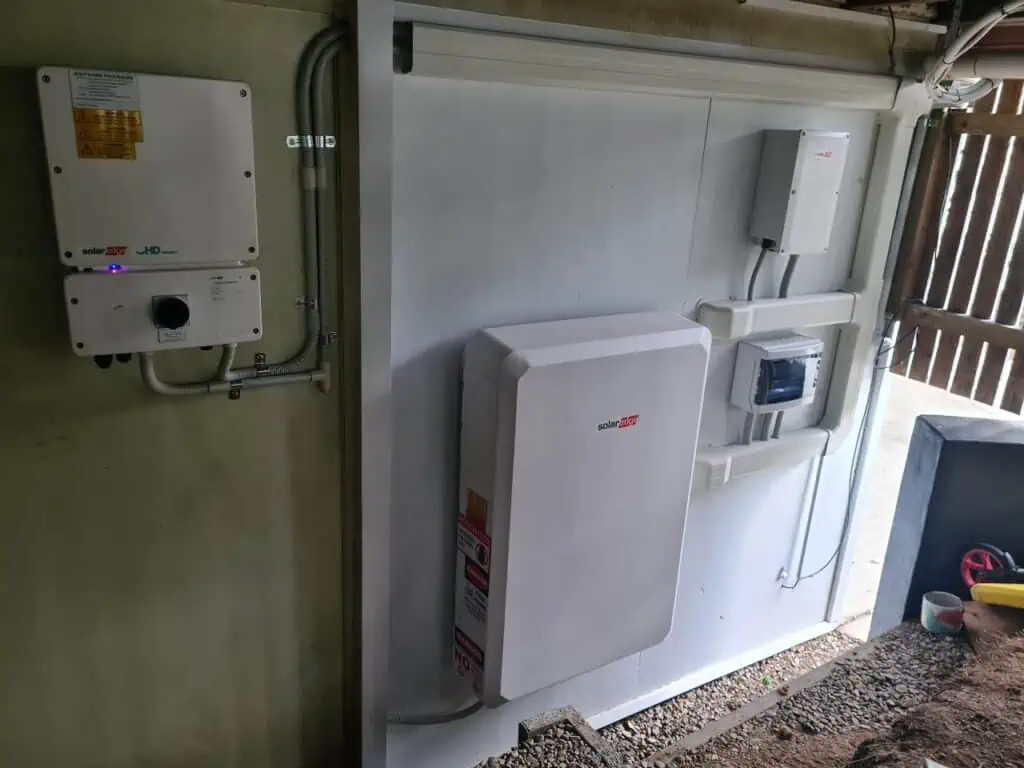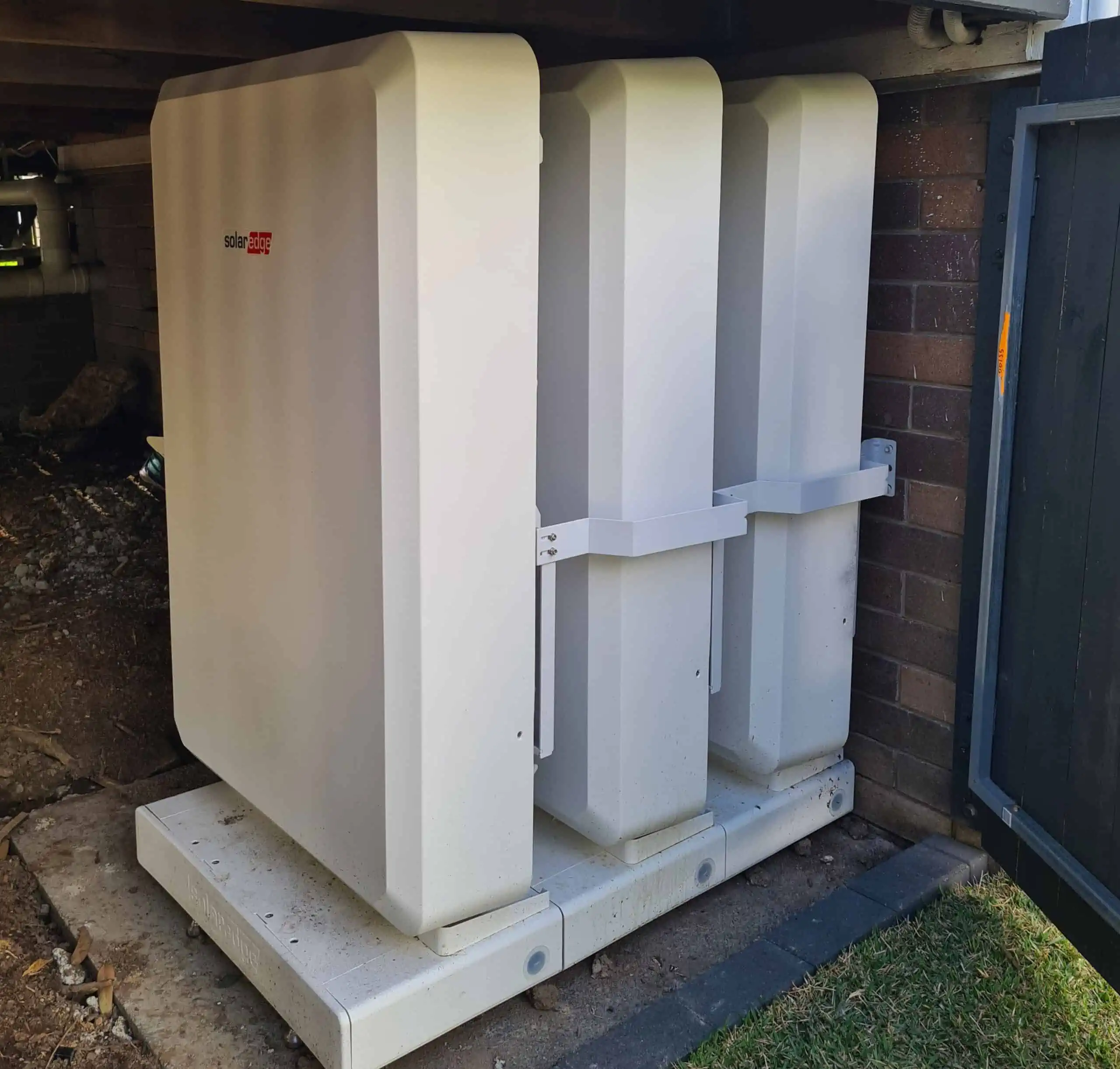People could be excused for believing that there is only one option when it comes to residential solar batteries. Tesla is a high-profile company that is continually making headlines as it’s somewhat of a media darling. While it might be dominating in the electronic vehicles markets, in the residential battery bank industry it faces stiff competition from other manufacturers who are driving innovation and the adoption of solar batteries.
Solaredge Energy Bank is one of those competitors that offer a real and, in some cases, better alternative to the Tesla Powerwall.
What is the Solaredge Energy Bank Battery?
The Solaredge Energy Bank battery is a lithium nickel manganese cobalt oxide (LMN) battery, which is the most popular battery type on the market because of its high energy destiny. It means that the battery can hold a lot of energy for its size. Its size means it’s flexible enough to be wall mounted or floor mounted.
The Solaredge Energy Bank has an efficiency of 94.5%. So, for every 10KwkWh put into the bank, the user can get 9.45KwkWh out of the battery. LMN batteries are a mature technology. They are reliable, consistent and used extensively in the industry. Where Solaredge is different is that the battery is designed to work seamlessly with other Solaredge products.
Solaredge has been a global leader in developing solar technology, such as the Solaredge inverter, EV charger, Hot water controllers, DC optimised solar systems. The company is a leader for its innovation and it’s no different with its investment in batteries.
The battery delivers a peak power rating of 7.5kW and 9.7kWh of usable capacity. It also delivers 5kW of continuous power.
The roundtrip efficiency of the Solaredge Energy Bank is an impressive 93.3%. Round trip efficiency is the amount of energy that remains in the system from the energy that the solar panels produce to the outlet.
These are important numbers to understand your batteries capacity and usability, but let’s compare it to the Tesla Powerwall.
What is the Tesla Powerwall?
A Tesla Powerwall, just like the Solaredge battery, is a rechargeable lithium-ion solar battery. It has a usable capacity of 13.5kWh and a battery size of 14kWh.
The Powerwall has its own inverter which means it can be retrofitted to existing solar systems, but because of this it is limited on scalability although you can add additional batteries for more storage.
Round trip efficiency of the Tesla Powerwall is about 90%.

What is the Tesla Powerwall?
From saving money to having a backup source of energy for when the power goes down, there are a few reasons why you might be tossing up the idea of getting a battery installed.
When the grid goes down, an integrated battery system keeps your power on by storing your solar energy as a backup power source. As such, it can keep your appliances running, and your home ticking along.
You can also set your battery to be used during high-peak energy pricing times, to save money.
If energy independence is the goal, you could use your battery alongside solar panels to completely wean your home off the grid.
Which battery storage is best for your home
Both batteries are very similar but there are some key differences that puts the Solaredge battery over the top of its competitors.
Price
The first thing that most people will notice is the price. As solar technology becomes more popular and scalable, there has been significant cost reductions since when the Tesla Powerwalls were launched in 2015 and the Solaredge Energy Bank was first released to the market in 2022.
It’s because of the saving in production costs that has helped to reduce overall costs, so users are not compromising on features or quality for the lower cost battery storage.
For a SolarEdge energy bank in Brisbane, contact 3D Energy.
DC coupled battery
Another major benefit of SolarEdge is that it is has a DC coupled battery storage system, which means it does not have to be inverted to charge the battery and the battery can be discharged through the one Energy Hub inverter onsite which the PV and battery is directly connected to under the same DC terminals.
Energex have limits on total inverter capacity per site so when the one Energy Hub inverter can be used for PV and battery charging / discharging then that’s a major benefit and there’s no 3rd party equipment onsite such as the Tesla Powerwall controlling the PV only inverter to enable battery charging and provide the backup function under grid fault conditions. This is all seamless with the Solar Edge DC coupled battery storage system and all by the one manufacturer.
Visit 3D Energy , a SolarEdge Energy Bank provider in Brisbane, to learn about the installation of integrated solar systems.
Compatible and scalable
While Tesla’s Powerwall AC coupled system can be used with different solar inverters, it also limits its possibilities as you cannot add more solar panels and connect solar panels to the Tesla Powerwall inverter as it’s a battery charging / discharging inverter only
According to the Clean Energy Council rules, solar panel capacity can only exceed the PV inverter capacity by 33%. This means with the in-built inverter in the AC coupled Tesla Powerwall it doesn’t allow you to oversize the existing PV as it’s not a DC coupled system and you cannot connect PV to this in-built Tesla Powerwall inverter so and you are limited in the maximum 33% solar array size.
With the SolarEdge Energy Bank it uses the hybrid SolarEdge Energy Hub inverter, so you can oversized the array 200% to 300% of the inverter rating with batteries connected you can increase the number of solar panels as needed, to help charge the battery simultaneously as supplying house loads such as electric vehicles that need to be recharged.
As we move towards more electrification of our homes and transportation, rising energy cost, and more efficient solar technology, homes will be seeking to increase their capacity. Upgrading is easier and most cost effective with the SolarEdge system.
The SolarEdge Energy Bank will future-proof your home as more energy is required.

One solution for Energy generation
A SolarEdge battery is only compatible with a Solaredge inverter, which is the most popular global energy hub inverter provider in the market. This is proven technology, and the energy bank is a high performance, complimentary product.
When you are looking at upgrading your whole system then the fact that the energy bank is not compatible with other solar inverters is insignificant as all projects available from Solaredge are not only effective, but also competitively priced.
Availability
A SolarEdge battery is only compatible with a Solaredge inverter, which is the most popular global energy hub inverter provider in the market. This is proven technology, and the energy bank is a high performance, complimentary product.
When you are looking at upgrading your whole system then the fact that the energy bank is not compatible with other solar inverters is insignificant as all projects available from Solaredge are not only effective, but also competitively priced.
Right now one of the biggest advantages of Solaredge energy bank is its availability and the service standards. Solaredge has a vast network of providers and suppliers, and a comprehensive manufacturing network.
When you are able to cut wait time down by more than a year, you get greater cost savings immediately.
Contact 3D Energy to find out how soon a SolarEdge energy bank and solar system can be installed in Brisbane.
Pros of the Solaredge Energy Bank
- DC coupled for higher efficiency
- Add extra solar panels to supply the home and charge the battery simultaneously
- One manufacturer SolarEdge inverter and Solaredge Energy Bank Battery
- Capture solar energy over the AC rating of the inverter with no clipping
- Industry-leading unlimited battery cycle
- Availability and cost
- Can connect up to 3 Energy Bank batteries per Energy Hub inverter
Cons of the Solar Edge Energy Bank
- Has a lower amount of usable energy per battery
Pros of the Tesla Powerwall
- Has a higher amount of usable energy per battery
- Can be added to any pre-existing solar system
Cons of the Tesla Powerwall
- Long wait times for installation
- AC coupled (more conversions and lower efficiency)
- Cannot control all inverters to operate in backup mode
- Cannot add extra solar panels to the inverter
- Higher cost
If you want to know more about the benefit of SolarEdge Energy Banks over Tesla, then contact us at 3D Energy in Brisbane.

